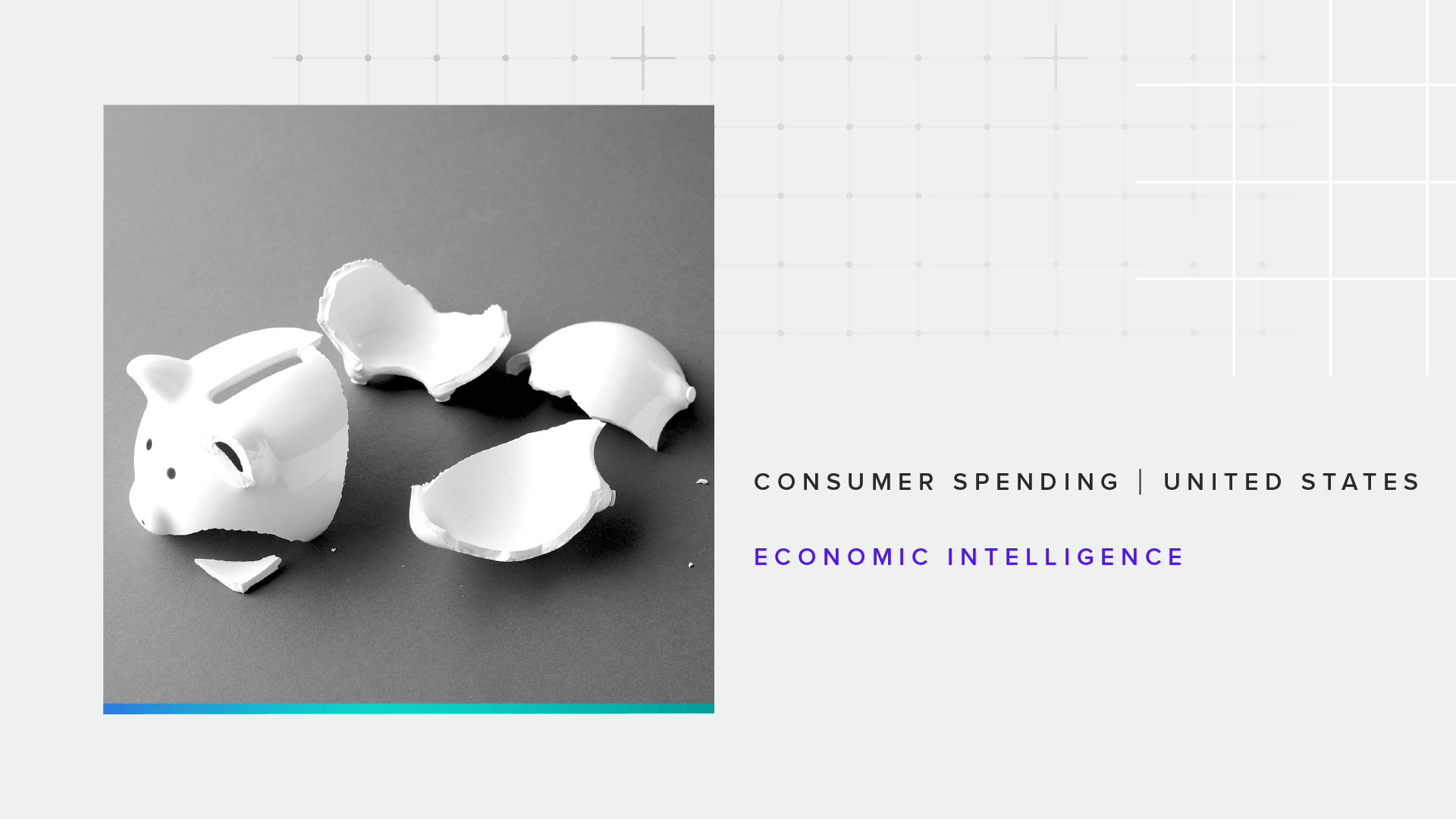Urban Consumers Are Dragging Down Discretionary Spending

Key Takeaways
U.S. adults’ discretionary spending is down significantly year-on-year, contributing to a recent softening in overall consumer demand.
One of the main culprits for the slowdown? Urban-located adults have cut back dramatically on non-essential purchases such as recreation or home furnishings compared to 2023.
Car ownership rates for adults living in cities have also declined amid elevated interest rates, potentially having knock-on effects impacting spending on other categories.
Consumer spending has weakened notably since last year. As of July 2024, U.S. adults on average reported spending 8.8% less than in the same month a year ago, after accounting for inflation and seasonal factors. While softer reported spending was broadbased, discretionary categories showed a steeper drop, declining 15.2% over the past year. Fatigue over elevated price levels, several years of depleted savings ability, higher interest rates and a cooling labor market could all be playing a role in slowing demand. While personal financial conditions remain supportive enough that households are still for the most part managing to cover expenses, the appetite to splurge has clearly waned among U.S. consumers.
Discretionary Categories Lead The Downward Trend in Purchasing Demand

City-dwellers’ spending habits shift from 2023 tailwind to 2024 headwind
Morning Consult’s economic analysis has previously discussed how wealthier adults and younger adults, respectively, have been less likely to splurge this summer. Another group with a notable shift in spending habits is adults living in urban areas. These consumers have traditionally spent higher amounts on discretionary categories than their suburban or rural counterparts. Intuitively, proximity to high density retail, entertainment and events might encourage more purchases of non-essential goods and services by city inhabitants. Recently, however, this type of spending has tapered off among those living in urban areas. In fact, discretionary spending levels among suburban-located adults in July surpassed the urban cohort’s average discretionary spending amounts for the first time since tracking for these categories began in December 2021.
Urban Consumers Are Driving the Pullback in Discretionary Spending

A similar pattern of rapidly waning demand among adults in cities is born out in the Consumer Health Index (CHI), a newly released high-frequency metric tracking overall spending demand among specific audiences.
Historically, CHI scores for urban adults have retained a higher level than those for suburban or rural adults. A key driver of this trend is the relatively higher proportion of younger adults living in cities: Morning Consult’s data suggests GenZ and Millennial adults’ share of the urban population is about 9 percentage points higher than their share of the general adult population. Both these generations tend to have stronger consumer sentiment scores, which, along with unemployment, are an underlying component of the CHI index.
The higher sentiment and associated demand boost for discretionary categories explains urban adults’ past willingness to splurge: CHI scores peaked in late 2023 for this group as cooling inflation and still-strong labor dynamics helped improve purchasing power. This year, however, the decline in CHI scores has been markedly more dramatic for urban adults than their peers in less densely populated areas. While demand has softened for all groups, city-dwellers’ CHI scores showed the most stark reversal from their peak, dropping 8.8 points through July as consumer attitudes on spending grew shakier.
After Helping Propel 2023 Spending Strength, Urban Demand Has Rapidly Dried Up

Categories driving spending slowdown among urban adults
Urban adults are spending less across the board. However, discretionary categories such as furniture and recreation had some of the largest declines compared with July 2023. Less homebuying and generally weak demand for durables may be preventing home furnishings purchases, while recreation was a category that saw such strong growth in 2023 that some normalization was perhaps inevitable. Both goods and services were subject to budget cuts, with urban consumers purchasing less apparel while also trimming restaurant and personal care spending. Only the most basic essentials–like housing, groceries, internet and phone services–had relatively smaller downshifts in inflation-adjusted spending, perhaps indicative of trading down to cheaper alternatives when possible rather than cutting back altogether.
City Dwellers Slashed Spending on Furniture, Recreation And More Since Last July

Shifting mobility habits may be impacting other spending categories
Another notable trend impacting urban adults more substantially than their non-urban counterparts is a declining car ownership rate. The 3-month average share of adults living in urban areas who said their household owns or leases at least one car, truck or SUV fell to a series low of 69.9% in May of this year, and has stayed close to that level through July. This recent level compares with a high of 77.3% most recently recorded in February 2022, a few months before the Federal Reserve began raising interest rates to fend off surging inflation. Increased interest rates are likely to blame for recently tepid auto demand by those living in cities. Urban adults differ from suburban or rural households in that the higher density nature of cities affords more diverse transportation options beyond personal vehicles, including public transit, biking or walking. Car ownership is not as fundamental to urban lifestyles as it is to those in less dense neighborhoods. Owning a vehicle for those in cities can be more of a choice than a necessity, so diminished affordability and general concern over price levels is likely reducing urban adults’ willingness to take on this cost if they can get by without it.
Car Ownership Among Urban Adults Fell to a Series Low This Year

Lower car ownership rates may carry significance outside of auto-related categories as well. Relatively more limited mobility may have knock-on effects for other types of spending, including many of the discretionary categories registering the largest declines from a year ago, as reduced access and convenience enabled by private transportation could limit spending opportunities for certain other goods and services. Road trips, for instance, can offer a lower-cost vacation alternative to flying; eliminating this in-between option could lead some families to stay home altogether rather than swallow the full price for a trip. Similarly, shopping on foot and needing to carry bags home might lead to fewer store visits or product acquisitions than, say, a car trip to a local mall. Taking a taxi to a restaurant or movie theater might feel like more of a hassle than driving oneself; less spendy options like ordering a pizza and streaming a show at home might win out.
Will Fed rate cuts right the ship for urban adults?
While it is difficult to specifically pinpoint the opportunity cost of unspent dollars associated with lower car ownership rates, it is plausible that it could be a factor contributing to less spending. Should the Fed proceed with rate cuts in September as many expect, improving financing options for autos could, over time, potentially reverse the downward trend in ownership. More important to overall urban spending demand, however, will be the trajectory of the labor market and associated views on personal financial conditions, which will ultimately determine these consumers’ willingness and ability to spend.
Kayla Bruun is the lead economist at decision intelligence company Morning Consult, where she works on descriptive and predictive analysis that leverages Morning Consult’s proprietary high-frequency economic data. Prior to joining Morning Consult, Kayla was a key member of the corporate strategy team at telecommunications company SES, where she produced market intelligence and industry analysis of mobility markets.
Kayla also served as an economist at IHS Markit, where she covered global services industries, provided price forecasts, produced written analyses and served as a subject-matter expert on client-facing consulting projects. Kayla earned a bachelor’s degree in economics from Emory University and an MBA with a certificate in nonmarket strategy from Georgetown University’s McDonough School of Business. For speaking opportunities and booking requests, please email [email protected]


